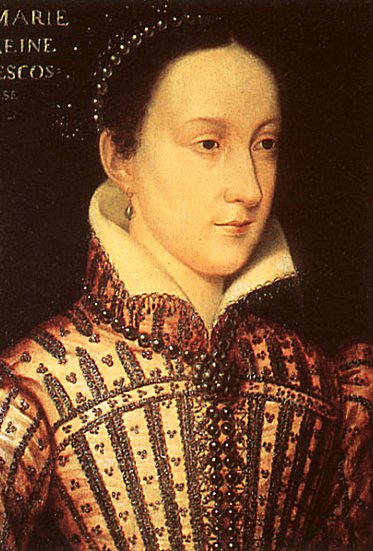
Above: Mary Queen of Scots.
On this day in history, 8 December 1542, Mary Stuart, queen consort of France and queen regnant of Scotland, was born at Linlithgow Palace, 'in the coldest of winters'. She was the only child of James V, king of Scotland, and his French consort Mary of Guise. Mary was the great-niece of Henry VIII of England by virtue of the fact that her paternal grandmother Margaret Tudor was Henry's elder sister. As such, she had a claim to the English throne, which as time would tell would ultimately prove to be her downfall.
Six days later, Mary's father died, and so the crown of Scotland passed to a baby girl. John Knox reported that the king exclaimed in regards to the fate of Scotland, when told of the birth of his daughter, 'it came with a lass, it will pass with a lass!' Whether true or not, Knox's comment that 'all men lamented that the realm was left without a male to succeed' is probably more believable. Although rumours suggested that the new princess was weak, even frail, Ralph Sadler, an English diplomat at the Scottish court, confirmed that Mary was a 'goodly child', 'as like to live'. She was baptised at the nearby Church of St. Michael, and was crowned queen in September 1543.

Above: Linlithgow Palace, where Mary was born.
Mary's biographer John Guy claims that 'Mary Stuart was born at a turning point in history'. Two weeks before her birth, her father's forces had been routed by the English at the Battle of Solway Moss. Henry intended for the infant Mary to marry his five-year old son Edward, as a means of uniting the two kingdoms. In July 1543 the Treaty of Greenwich was signed. But the proposed Anglo-Scottish alliance was to disintegrate as rival factions, led by Catholics and Protestants who favoured alliance with either France or England, fought for control of the infant queen. In 1548 she travelled to France, and eventually wed Francis, son of the French king.
Thus were the events set in motion which would lead to Mary becoming queen consort of France alongside queen regnant of Scotland. Her short life in France did not prepare her for the struggles and conflict she would later encounter in her home country. Mary's life was turbulent, dramatic, and ultimately tragic: forty-four years after her birth, she would die at the hands of the executioner in the great hall of Fotheringhay Castle, a declared traitor to Queen Elizabeth I.
Nice post Conor. Just wondered if you had heard of Marie Stuart Society who are trying to have an statue of Mary erected in Scotland at Linlithgow Palace http://www.mariestuartsociety.org/appeal.php
ReplyDelete